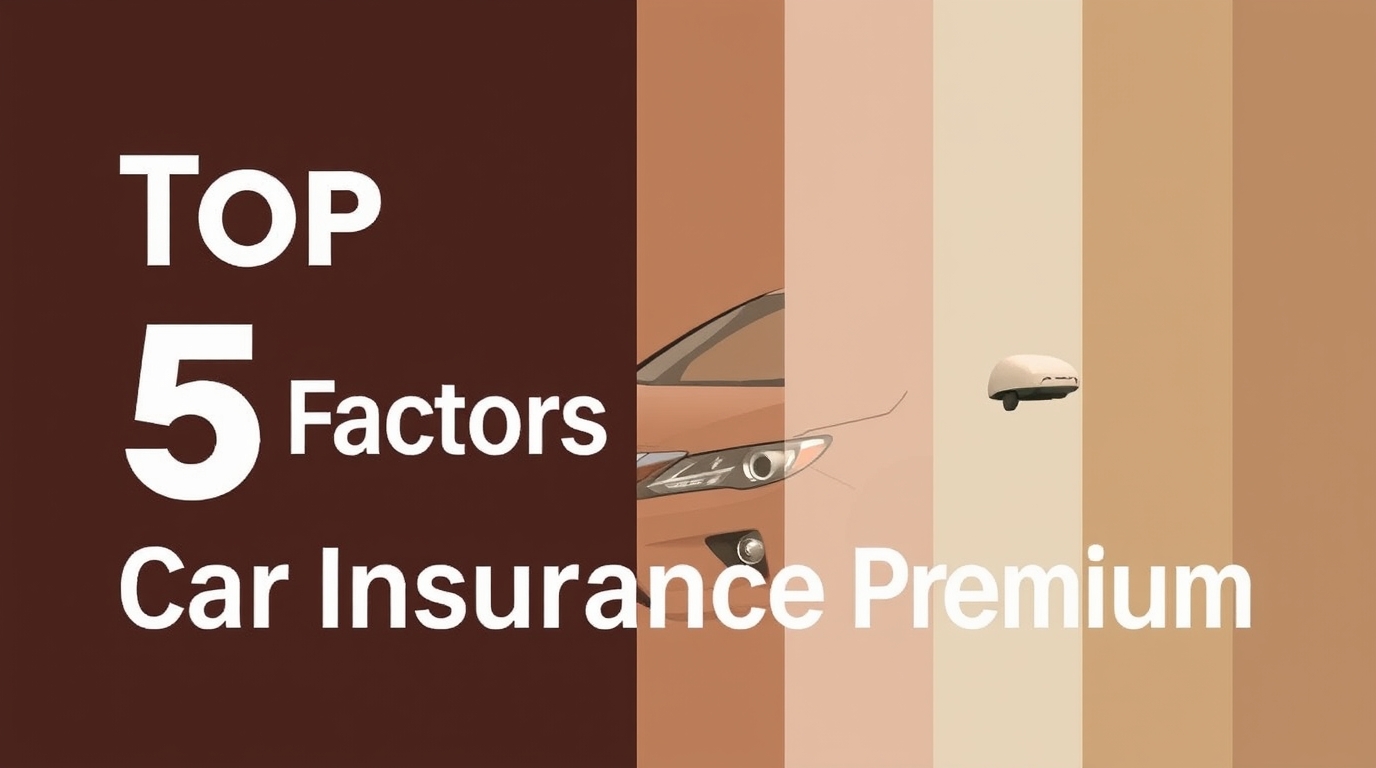
Top 5 Factors That Affect Your Car Insurance Premium
Car insurance premiums vary widely depending on several key factors. Understanding these can help you make informed decisions and possibly lower your costs. In this article, we’ll delve deeper into the top five factors that significantly affect your car insurance premium, providing you with actionable insights to navigate your policy options better.
1. Driving History: Your Past Shapes Your Premium
Your driving record is one of the most critical determinants of your car insurance premium. Insurance companies assess your risk level based on past driving behavior.
- Accidents: A history of at-fault accidents can lead to higher premiums as they indicate a greater risk for insurers.
- Traffic Violations: Speeding tickets, DUIs, and other infractions signal risky behavior, resulting in elevated costs.
- Safe Driving Discounts: Maintaining a clean driving record can qualify you for significant discounts, making this factor a double-edged sword.
Highlighted Tip: Drive cautiously, follow traffic rules, and consider enrolling in defensive driving courses to demonstrate your responsibility and reduce your premium over time.
2. Age and Gender: The Statistics That Matter
Statistical risk data based on age and gender can influence your premium significantly.
- Young Drivers: Drivers under 25 often face higher premiums due to inexperience and a higher likelihood of accidents.
- Older Drivers: Seniors may also see increased rates depending on factors such as health and reaction times.
- Gender Differences: In some regions, young male drivers face higher premiums as they’re statistically more prone to risky behavior.
Highlighted Tip: If you’re a young driver, look for programs that reward safe driving, such as telematics or usage-based insurance options, which track and reward responsible driving behavior.
3. Type of Vehicle: What You Drive Matters
The make, model, and age of your car significantly affect insurance costs.
- Value: Luxury or sports cars are costlier to insure due to higher repair or replacement costs.
- Safety Features: Vehicles equipped with advanced safety features or anti-theft devices often qualify for discounts.
- Repair Costs: Cars with expensive or hard-to-source parts may increase your premiums.
Highlighted Tip: When purchasing a vehicle, consider models with high safety ratings and low repair costs to minimize your insurance expenses.
4. Location: Where You Live and Park Counts
Your home address and where you park your vehicle play a substantial role in determining your premium.
- Urban Areas: City dwellers often pay higher premiums due to increased traffic, higher accident rates, and a greater likelihood of theft.
- Rural Areas: Lower population density usually means reduced risks and, consequently, lower premiums.
- Weather Risks: Living in areas prone to natural disasters like floods, hurricanes, or hailstorms can increase rates.
Highlighted Tip: Whenever possible, park in secure, covered areas, and consider installing anti-theft devices to mitigate location-based risks.
5. Coverage Choices and Deductibles: Balancing Cost and Protection
The level of coverage you choose and the deductible you’re willing to pay directly influence your premium.
- Comprehensive vs. Liability: Comprehensive coverage costs more but offers broader protection against non-collision-related damages like theft and natural disasters.
- Deductible Amount: Opting for a higher deductible lowers your premium but increases out-of-pocket costs during a claim.
- Add-Ons: Additional options, like roadside assistance or rental reimbursement, can elevate your premiums.
Highlighted Tip: Regularly review your coverage to ensure it aligns with your needs and consider raising your deductible if you’re financially prepared to cover higher out-of-pocket costs during claims.
Bonus Tips to Lower Your Premium
Here are some additional strategies to help you save:
- Shop Around: Compare quotes from multiple insurers to find the best deal for your specific needs.
- Bundle Policies: Combine auto insurance with home or renters’ insurance to unlock multi-policy discounts.
- Telematics Programs: Participate in usage-based insurance programs that reward safe driving habits.
- Ask for Discounts: Check with your insurer about eligibility for discounts, such as good student discounts, military discounts, or savings for long-term customers.
- Maintain Good Credit: In many regions, your credit score can impact your insurance premium, so strive to keep it in good standing.
Conclusion: Knowledge is Your Best Tool
Understanding the factors that influence your car insurance premium can empower you to make smarter choices. While some factors, like age or gender, are beyond your control, others, such as your driving habits, vehicle choice, and coverage options, are within your influence.
By actively managing these factors and leveraging available discounts, you can optimize your coverage and reduce your costs. Regularly review your policy to ensure it meets your current needs and explore ways to save without compromising on essential protection. Being proactive is the key to achieving peace of mind on the road while keeping your premiums manageable.